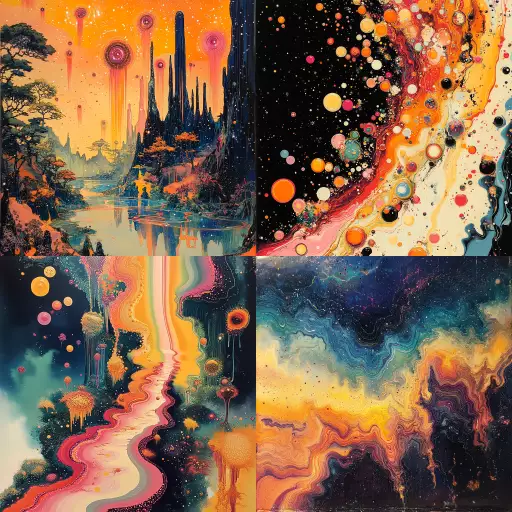Explore the Best AI Image Gallery

Pixelated Portraits: How AI Image Generation is Transforming the Design Landscape
The creative world is abuzz with a new wave of innovation: artificial intelligence (AI) image generation. This technology, capable of producing stunning visuals from simple text prompts, is rapidly changing how we design, create, and interact with imagery. From generating unique marketing assets to crafting immersive virtual experiences, AI image generators are poised to revolutionize various aspects of the design industry.
The Creative Arsenal: Potential Uses in Design
AI image generation tools offer a vast array of possibilities for designers across disciplines:
- Branding and Marketing: Generate eye-catching logos, social media graphics, and marketing collateral that resonates with target audiences.
- Web and UI/UX Design: Craft unique website visuals, app icons, and interactive elements to enhance user experience.
- Print and Publication Design: Create captivating illustrations, cover art, and layouts for books, magazines, and brochures.
- Advertising and Media Production: Generate compelling visual content for advertisements, films, and video games.
- Fashion and Apparel Design: Explore new textile patterns, design unique garment concepts, and visualize collections in a virtual setting.
Democratizing Creativity: Accessibility and Collaboration
One of the most significant impacts of AI image generation is its ability to democratize creativity. Tools with user-friendly interfaces empower individuals with limited design experience to generate professional-quality visuals, fostering inclusivity and innovation.
Furthermore, AI facilitates collaborative workflows. Designers can leverage AI-generated assets as starting points, allowing for rapid iteration and experimentation, ultimately accelerating the creative process.
Navigating Ethical Considerations
As with any powerful technology, AI image generation raises ethical considerations that require careful attention:
- Copyright and Ownership: Determining the legal ownership of AI-generated images is a complex issue that requires clear guidelines and regulations.
- Bias and Representation: AI algorithms can perpetuate existing biases present in training data, leading to unfair or discriminatory representations. Its crucial to ensure diversity and inclusivity in training datasets to mitigate these risks.
- Misinformation and Deepfakes: The potential for AI to generate realistic but fabricated images raises concerns about the spread of misinformation and the erosion of trust in visual content.
- Job displacement:** While AI can augment creative tasks, there are concerns about its impact on traditional design roles. Its essential to consider the broader societal implications and explore strategies for reskilling and upskilling workers.
The Future of AI-Powered Design
AI image generation is still in its early stages, but its potential is immense. We can expect to see continued advancements in:
- Real-time Image Generation: Imagine designing and visualizing concepts instantly, with AI generating visuals as you work.
- Personalized Content Creation: AI could tailor designs to individual preferences, creating unique experiences for users.
- Interactivity and Immersive Experiences: AI-generated images could become integral components of interactive installations, virtual reality, and augmented reality applications.
- Human-AI Collaboration: The future likely holds a collaborative relationship between designers and AI, where humans leverage AIs capabilities to enhance their creative processes.
As we navigate this evolving landscape, its crucial to embrace the opportunities while addressing the ethical challenges. By fostering responsible development and promoting inclusivity, we can harness the power of AI image generation to unlock new frontiers in design and creativity.





](https://images.ai-img.art/thumbnails/150/bddf3ae4a232290858389b933c866ad3be429ef2e25c23a9f4d7713ed6e44d0b.webp)
](https://images.ai-img.art/thumbnails/150/f67d9af3398150f2ab1bcf250717fea134275e2ca896252b54a4d9bb3719f9ac.webp)









](https://images.ai-img.art/thumbnails/150/f9584153b4cddd8c9fab611dc10247549b275c59bc173251e37d0935874f9deb.webp)



](https://images.ai-img.art/thumbnails/150/c2c9c48b38fae37f0a457b80b084ed01ba803810fc8f488c8f610c03abc74049.webp)






](https://images.ai-img.art/thumbnails/150/008b5d5d49667cc2e93a5f8a8adfaa545963da99c39ff0901f5296294636400d.webp)













](https://images.ai-img.art/thumbnails/150/4289d1230b86a96c4d556636c3167bed0ef38f850826549517e4e45db4d87bf7.webp)